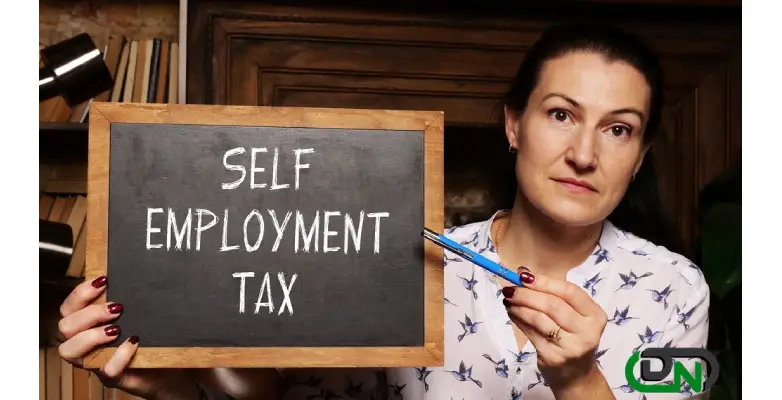Estimated tax payments for 1099 independent contractors are crucial to managing your tax obligations. Unlike traditional employees who have taxes withheld from their paychecks, independent contractors are responsible for paying their income taxes, including federal and often state taxes.
These payments are made quarterly to the IRS and state tax agencies to ensure you meet your tax liabilities throughout the year. To calculate the amount owed, contractors must estimate their annual income and self-employment taxes, taking into account deductions and credits. Failure to make these payments on time can result in penalties and interest.
Independent contractors must stay organized, track their income and expenses, and plan for these quarterly payments to avoid financial surprises and potential liabilities. Managing estimated tax payments helps contractors meet their tax obligations and maintain financial stability.
Table of Content
Understanding Estimated Tax Payments
Estimated tax payments are periodic payments made by individuals and businesses to prepay their income tax liability throughout the year. Estimated tax payments ensure that taxpayers meet their tax obligations gradually rather than lump sum at the end of the tax year. This system helps the government collect revenue consistently and reduces the risk of taxpayers owing a substantial amount at tax filing time. Estimated tax payments are typically required for self-employed individuals, freelancers, and those with income not subject to tax withholding, such as investment income. Failure to make these payments may result in penalties and interest.
Critical Differences Between W-2 Employees and 1099 Contractors Regarding Taxes
Most participants in the sharing economy are categorized as 1099 contractors for tax purposes, also called independent contractors or freelancers. The IRS classifies these 1099 contractors as self-employed individuals. If your earnings exceed $400, you must pay self-employment tax, encompassing Medicare and Social Security contributions, which collectively amount to 15.3% of your net profit from contractor work, not your overall taxable income.
When it comes time to file your annual tax return, you’ll calculate this net profit on Schedule C (Form 1040), specifically designed for reporting Profit or Loss from Business as a Sole Proprietorship. This differs from W-2 employees, where employers cover half of these taxes, leaving employees responsible for the other half. As an independent contractor, you bear the full burden of self-employment taxes.
It’s crucial to note that self-employment taxes are based on net profit, not your total taxable income. Thus, you must determine your net profit by subtracting eligible deductions from your gross earnings.
In addition to self-employment tax, your income tax liability hinges on your tax bracket. For instance, earning $15,000 as a 1099 contractor and filing as a single, unmarried individual, you should set aside approximately 30-35% of your income for tax obligations. Saving money is essential because you might need it to make quarterly estimated tax payments.
These estimated tax payments encompass,
- Self-Employment Taxes
- Income Tax
Why 1099 Contractors are Responsible for Paying Estimated Taxes?
1099 contractors are responsible for paying estimated taxes because they are considered self-employed. Unlike traditional employees, employers do not withhold income taxes from their payments. To ensure the government receives its share of taxes yearly, contractors must make quarterly estimated tax payments. These payments cover income tax and self-employment tax, which includes Social Security and Medicare contributions. Failing to make these estimated tax payments can lead to penalties and interest charges. By paying estimated taxes, contractors fulfill their tax obligations and avoid potential financial liabilities at the end of the tax year.
Calculating Estimated Tax Payments
It is crucial to meticulously and precisely calculate your annual tax payment obligations. Independent contractors should evaluate their year-to-date earnings and forecasted income for the remainder of the year to determine their estimated payment needs. Sending too much money will result in a year-end refund, but excessive overpayments can lead to cash flow challenges, especially for independent contractors. Conversely, the IRS will impose penalties and interest on the shortfall if you underpay your estimated taxes.
To ascertain your estimated tax payment requirements, follow these steps:
- Determine whether your income will surpass last year’s earnings. If it does, calculate your estimated tax payments using either 100% or 110% of the previous year’s tax, depending on your income, and proceed to Step #4.
- If your income is lower than last year, analyze your year-to-date earnings and use this data to project your total annual revenues.
- Calculate your projected tax liability, which may require consulting a tax professional. for assistance. Remember that, as a freelancer, you must account for income and self-employment taxes. Multiply this amount by 90%.
- Pay according to the IRS’s scheduled due dates. Estimated tax payments are typically due on 4/15, 6/15, 9/15, and 1/15, although exact dates may vary slightly due to holidays and calendar adjustments.
- If you miss a payment, submit it as soon as possible to minimize interest charges on the late payment. Only wait until you file your tax return, which could result in significant late fees.
Where to Submit Your Quarterly Tax Payments
Once you’ve determined your tax liability, sending your quarterly tax payments to the appropriate authorities is crucial. You have two primary options for making these payments:
- Mail-in Payments: You can mail a check or money order to the Internal Revenue Service (IRS). Along with your payment, include the necessary quarterly tax forms, such as Form 1040-ES. Please note that the IRS mailing address varies depending on your place of residence, so consult the instructions on Form 1040-ES to ascertain the correct mailing address. You can access Form 1040-ES [here](insert link).
- Online Payment: An alternative method is to pay your estimated taxes online via the IRS website. Online payments offer several advantages, including near-instant processing eliminating concerns about mail delays or losses. The system generates a confirmation number for each transaction, providing proof of payment in case of any issues. Furthermore, online payments can be conveniently made from the comfort of your home without needing postage stamps.
For more comprehensive information on how to make estimated tax payments online, please refer to our detailed blog post on the subject.
Important Quarterly Tax Deadlines
It’s essential to adhere to quarterly tax deadlines to avoid potential penalties. These are the typical deadlines for quarterly estimated tax payments:
- First Quarter Deadline: April 15th – Due on tax day, April 15th, this deadline covers income earned in January, February, and March.
- Second Quarter Deadline: June 15th – Payment for second-quarter taxes, which includes income from April and May, must be made by June 15th.
- Third Quarter Deadline: September 15th – Estimated tax payments for income earned in June, July, and August are due September 15th.
- Fourth Quarter Deadline: January 15th – The largest payment of the year encompasses income from September, October, November, and December and is due on January 15th.
Filing a Tax Extension
While quarterly taxes do not apply to everyone if you owe taxes, it’s crucial to make timely payments to avoid repercussions. Ensure you meet all necessary payment deadlines mentioned above.
If you anticipate being unable to complete your tax return by tax day, you can request a tax filing extension. Remember that an extension grants additional time for filing but does not extend the deadline for tax payments. If you cannot pay your taxes in full, consider contacting the IRS to discuss setting up a payment plan.
In most cases, extension requests are automatically approved. If your extension is accepted, you’ll typically have until October 15th to file your return unless this date falls on a weekend or holiday, in which case the deadline shifts to the next business day.
However, it’s essential to note that tax payments are still due on time even with a filing extension. According to the IRS:
“An extension of time to file your return does not grant you any extension to pay your taxes. You should estimate and pay any owed taxes by your regular deadline to help avoid possible penalties. You must file your extension request no later than the regular due date of your return.”
Making Estimated Tax Payments
You can conveniently make your estimated tax payments through the IRS website, ensuring prompt processing. This method eliminates concerns about lost prices in transit and provides confirmation numbers for your records, offering peace of mind in case of any issues. The best part is you can make these payments from home without needing postage stamps. For further information on paying estimated taxes online, refer to our comprehensive blog post.
Completing the Necessary Tax Forms (e.g., Form 1040-ES)
Form 1040-ES is a quarterly estimated tax payment form for individuals who expect to owe more than $1,000 in taxes when they file their annual return. It is used to pay estimated taxes on income not subject to withholding, such as self-employment income, investment income, and unemployment benefits.
To complete Form 1040-ES:
- Determine your estimated tax liability. This can be done using the worksheet on the back of Form 1040-ES.
- Divide your estimated tax liability into four equal payments. These payments are due on April 15, June 15, September 15, and January 15 of the following year.
- Complete Form 1040-ES. Be sure to include your Social Security number, your spouse’s Social Security number if you are filing jointly, and the amount of each estimated tax payment.
- Mail Form 1040-ES to the IRS. You can also pay your estimated taxes electronically using the IRS website.
Here are some tips for completing Form 1040-ES:
- If you need clarification on your estimated tax liability, you can use the IRS Tax Estimator tool.
- If you have a change in your income during the year, you may need to adjust your estimated tax payments. You can do this by filing a new Form 1040-ES.
- If you fail to pay estimated taxes or do not pay enough estimated taxes, you may be subject to a penalty.
Other tax forms you may need to complete include:
- Form 1040: This is the main income tax return form for individuals.
- Schedule A: This schedule itemizes deductions, such as mortgage interest, property taxes, medical or dental expenses, and charitable contributions.
- Schedule B: Reports taxable interest or ordinary dividends exceeding $1,500.
- Schedule C: This schedule is used to report self-employment income.
- Schedule D: This schedule reports capital gains and losses.
If you need help determining which tax forms you need to complete, you can use the IRS Interactive Tax Assistant tool.
Setting Aside Money for Tax Payments
To avoid falling short when tax season rolls around, you must reserve sufficient funds to meet your tax obligations. Many small business proprietors allocate 30% of their total income for this purpose, a wise and prudent strategy. While you can customize the percentage to your specific needs, earmarking 30% should provide ample coverage for your tax liabilities. It often exceeds the required amount, potentially resulting in a surplus beyond your tax bill. In such instances, you can treat this surplus as your tax refund!
How 1099 Contractors Can Use Tax Deductions and Credits
1099 contractors can take advantage of a wide range of tax deductions and credits, including:
- Home office deduction: If you work from home, you can deduct a portion of your home expenses, such as mortgage interest, rent, utilities, and property taxes.
- Self-employment tax deduction: This deduction allows you to deduct half of your self-employment taxes from your taxable income.
- Car expenses: If you use your car for business, you can deduct the actual expenses that you incur, such as gas, oil, and maintenance, or you can use the standard mileage deduction.
- Health insurance premiums: You can deduct 100% of your premiums, even if a plan does not cover you through your spouse’s employer.
- Retirement contributions: You can deduct contributions to a SEP IRA or a SIMPLE IRA.
- Education expenses: If you take education courses to improve your job skills, you may be able to deduct the cost of the courses.
- Business expenses: You can deduct any ordinary and necessary business expenses that you incur, such as advertising, travel, and meals.
To take advantage of tax deductions and credits, you must keep accurate records of your expenses. You can use these records to prepare your tax return or to provide documentation to a tax preparer.
Navigating the intricacies of taxes can be daunting, but you don’t have to tackle it on your own. We provide specialized assistance for individuals in the 1099 contractor, and freelancer. Our extensive expertise in this domain sets us apart from traditional CPA firms.
Our certified tax professionals are enthusiastic about addressing your most challenging tax inquiries. Don’t hesitate to arrange a discussion with one of our experts today. Kickstart your tax journey with a commitment-free, one-on-one strategy session led by one of our certified tax pros.




